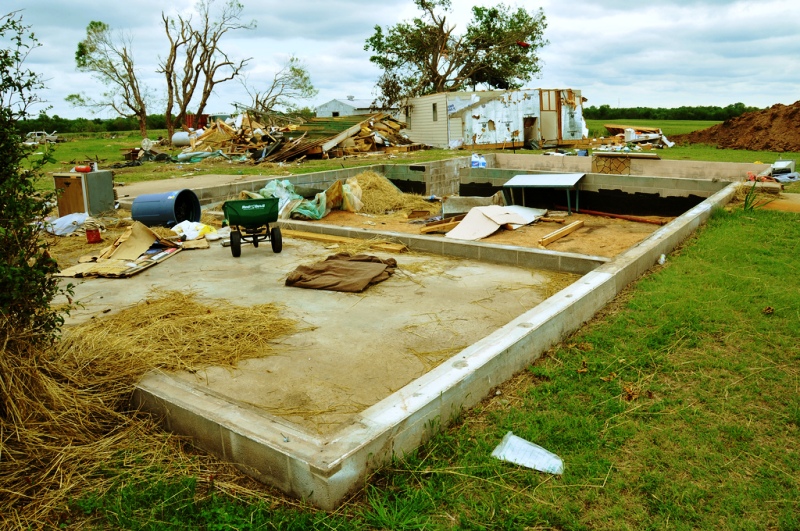Home Repairs | What Is Underpinning
Summary
– What is underpinning?
– Why protect the underpinning?
– Criteria for selecting underpinning protection
– Materials
– Choosing an underpinning
– Price of underpinning protection
Underpinning protection is an essential part of the construction process, which, if neglected, can lead to many accidents and high repair costs.
What is underpinning?
The underpinning of construction is a structure made of masonry blocks or concrete poured into a formwork on which the building will be built. Totally or partially buried, an underpinning is in contact with the ground by its base or even several of its faces.
The constraints of the underpinning are multiple: it endures the vertical loads exerted by the weight of the building; it must undergo the pressure of the earth which surrounds it while protecting the base of the construction from moisture, roots, and insects.
Why protect the underpinning?

In any construction, and even more so if part of it is buried (cellar, crawl space, garage in the basement…), insulation between the backfill earth and the walls is essential, even though concrete walls are less permeable to capillary rise, water exchange, salts and minerals than masonry walls.
Selection criteria for underpinning protection
You must select the underpinning protection according to two main criteria:
The nature of the ground

In particular, its hydric characteristics may require that peripheral drainage be carried out before installing underpinning protection:
– In permeable soil (both the soil itself and the excavation backfill): generally, a granular or sandy soil in which rainwater infiltrates without stagnating, peripheral drainage is not necessary, and only the underpinning protection is sufficient.
– In clay or loam soils that are fairly impermeable: water may stagnate without penetrating deep into the soil, which requires peripheral drainage of the underpinning protection.
The destination of the partially buried parts

It is declined in 3 categories:
1. The walls of the premises cannot support any trace of humidity (living quarters, offices, game rooms, or movie theatres…): they are classified in the first category, which requires underpinning protection ensuring the waterproofing.
2. The walls of non-habitable premises can support some traces of moisture (boiler room, cellar, garage …): they are placed in the second category, which requires only waterproofing protection (not waterproofing).
3. The walls of non-accessible parts (crawl space, earth walls) that do not require special treatment are placed in the third category (without waterproofing or sealing). However, other protections are necessary, particularly against termites and other insects.
Please note: when there is a risk of the water table rising on a property, especially near watercourses likely to flood, waterproofing and sealing the underpinning is not enough. It is then necessary to build a casing.
Materials
To ensure drainage, waterproofing, and sealing according to the required level of protection of the underpinning, the traditional materials (aggregates, geosynthetics, etc.) have gradually given way to using sheets with excrescences.
Buried excrescent waterproofing sheets are thick films made of extruded high-density polyethylene and are rot-proof. They are interspersed with cells (on the soil side) and bubbles (on the masonry side) or vice versa, which physically isolate the underpinning while creating a decoupling air space between the backfill and the construction.
Choosing an underpinning protection

Thus, according to the role(s), the underpinning protection will have to ensure that one will select which sheet to excrescendo among the following ones.
Protection mats
They have mainly a mechanical protection role in withstanding the pressures of the ground. It is the underpinning protection sheet sufficient for permeable soils and non-habitable premises.
Protection + filtration + drainage blankets
They ensure filtration and drainage thanks to an integrated geotextile positioned on the fill side. In contrast to the protection-only blankets, the cells are set on the fill side to create a space between the blanket and the geotextile so that drainage can take place.
Protection + filtration + drainage + waterproofing sheets
They also have a PVC vapour barrier film that ensures waterproofing by allowing air to circulate, but not the water vapour and humidity that this air carries.
Other
In addition to a protective sheet, it is never out of the question to cover the buried walls with products that provide partial waterproofing, especially against the growth of plants. In this respect, there are two categories of products: grey cement-based products and black bitumen-based products.
Good to know: underpinning mortars are generally industrial mortars to which an additive has been added (water repellent, waterproofing, super-plasticizer, etc.) that cement manufacturers and screed makers can supply and apply.
The price of buried underpinning protection includes the supply and the installation of the plaster or mortar, then the alveolar sheet.
Please note: some prices for cellular sheets are displayed per ml (linear meter) in 1 m, 1.5 m or 2.4 m widths, others are announced per m², and still others per roll, generally 20 m long but in different widths.
Pingback: Building Materials: Which Alternative Is The Most Trendy? | Building construction blog
Pingback: Wooden House: The New Generations of Wood | Building Pros